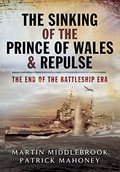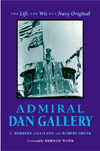North Atlantic Run
The Royal Canadian Navy and the Battle of the Convoys
Milner, Marc
1985, University of Toronto Press
ISBN 0870214500
| Type. | General History |
| Pros. | Carefully researched and fascinatingly told |
| Cons. | None to speak of |
| Rating. |  |
This volume, North Atlantic Run, and the same author's The U-Boat Hunters can be considered complementary volumes in an overall history of the Royal Canadian Navy in the Battle of the Atlantic. This battle, lasting for the Canadian Navy for a full five and a half years, was by far that force's major naval contribution to the war. While its Fleet destroyers (Tribals and "V" Class), Armed Merchant Cruisers and minesweepers contributed to the larger war at sea in no small measure, those ships made up but 13% of the Navy's fighting ships. Thus "The Battle of the Atlantic" is naturally the focus of most RCN histories over the years.
This book, and its companion volume, provide by far the most carefully assessed and yet fascinating reading of that tremendously complex "battle", from at least the Canadian perspective. Dr. Milner's coverage is entirely unbiased yet knowledgable, based on his several years' employment in the Department of Defence's Directorate of History, which not only gave him access to all the basic records and to his counterparts in London, Washington and Germany, but permitted interviews with a host of the participants in the battle. Consideration and even careful attention is given to Allied assessments of the RCN's contributions, in this volume often highly critical. Within four days of the declaration of war in early September, 1939, the Canadian Navy began escorting convoys out of Halifax. That war began with a total naval strength of but six destroyers and four minesweepers, and as a measure of unpreparedness for the type of war to be fought, only two officers with anti-submarine specialist training. So this prompt assumption of responsibility was no mean feat. If one includes MTBs, major landing craft and the like, the Navy grew to almost 400 warships. This spectacular growth, most of it coming from shipyards that had never built a warship, not only fleshed out an impoverished Navy but created massive collateral problems of training, manning and even administration of such a force. Milner points out all too clearly that the Navy's main problems came from lack of any infrastructure to support the rapid growth. Most pre-war technical training of even petty officers and almost all officers had been undertaken in RN establishments. There were no more than literally a handful of regular force officers and petty officers to show all the newcomers how to do the jobs they were pitched into, ready or not, trained or untrained.
This volume covers from September, 1939, with some brief background introduction, up to about mid-1943, when the battle took a decisive turn for the better. In those years, the few RCN officers and crews did what they could to help, fortunately at first with the U-boats concentrating around the United Kingdom. The destroyers augmented the RN in its defence and anti-invasion patrols and in the evacuations from France. Then as the corvettes and the elderly ex-USN destroyers began to appear they were at first manned largely by the RCNR - the ex-merchant seamen and fishermen who at least knew something of navigation, ship handling and husbandry - and the few RCNVRs, the pre-war volunteers, who had maybe a few months' sea experience at the most. As the battle grew in intensity, and the U-boats moved into the wider Atlantic, the Canadians "coped" as best they could. Their ships were end-of-the-line when it came to receiving gyro compasses, better ASDIC (sonar, in American terms), any operable radar, even their modest 4" foc's'le gun. Milner assesses the problems, explains, even highlights, their shortcomings, more so than many previous historians, yet illustrates the progress of the struggle with wonderful and colourful examples of both fortitude and failure. While the Canadians were left behind in the rapidly developing technological war in this period, with the manufacturing base at home almost non-existent at the beginning, they were assigned the most dangerous and taxing of the convoys as often as not - the SC slow convoys out of Sydney, Cape Breton and the returning ONS convoys. Those that were longer on the "Black Pit" of no air support, too slow to have a hope of out-running the U-boats' extensive patrol lines. The losses here caused much criticism by both the Admiralty and later the USN. To the extent that in late 1942 most RCN escorts and their crews were withdrawn "for retraining" by their supposed RN betters. It was a new war, this anti-U-boat war, for which no-one was prepared, even the vaunted RN. And Canada's Navy, in Milner's view, made a huge but amateurish contribution in the period covered by North Atlantic Run. It was a time of trial, loss, and re-education, told here with insight and excitement. By the end of the volume the RCN was getting a grasp in the problems, and the new ships, the faster, larger, better armed, and most vitally better manned with now-experienced crews, the frigates and Castle Class corvettes were on the horizon. The Canadians had come through the storm, of both U-boats and controversy.
It is a book, together with its sequel, The U-Boat Hunters, that should be on the shelf of anyone hoping to understand the swiftly moving changes of that battle and where the Canadians fitted in.
Review written by CDR Fraser M. McKee, Ontario, Canada.
Published on 19 Oct 2001.
- We have errata information for this title. Check it out!
This title is highly recommended.
Return to our main review page.



